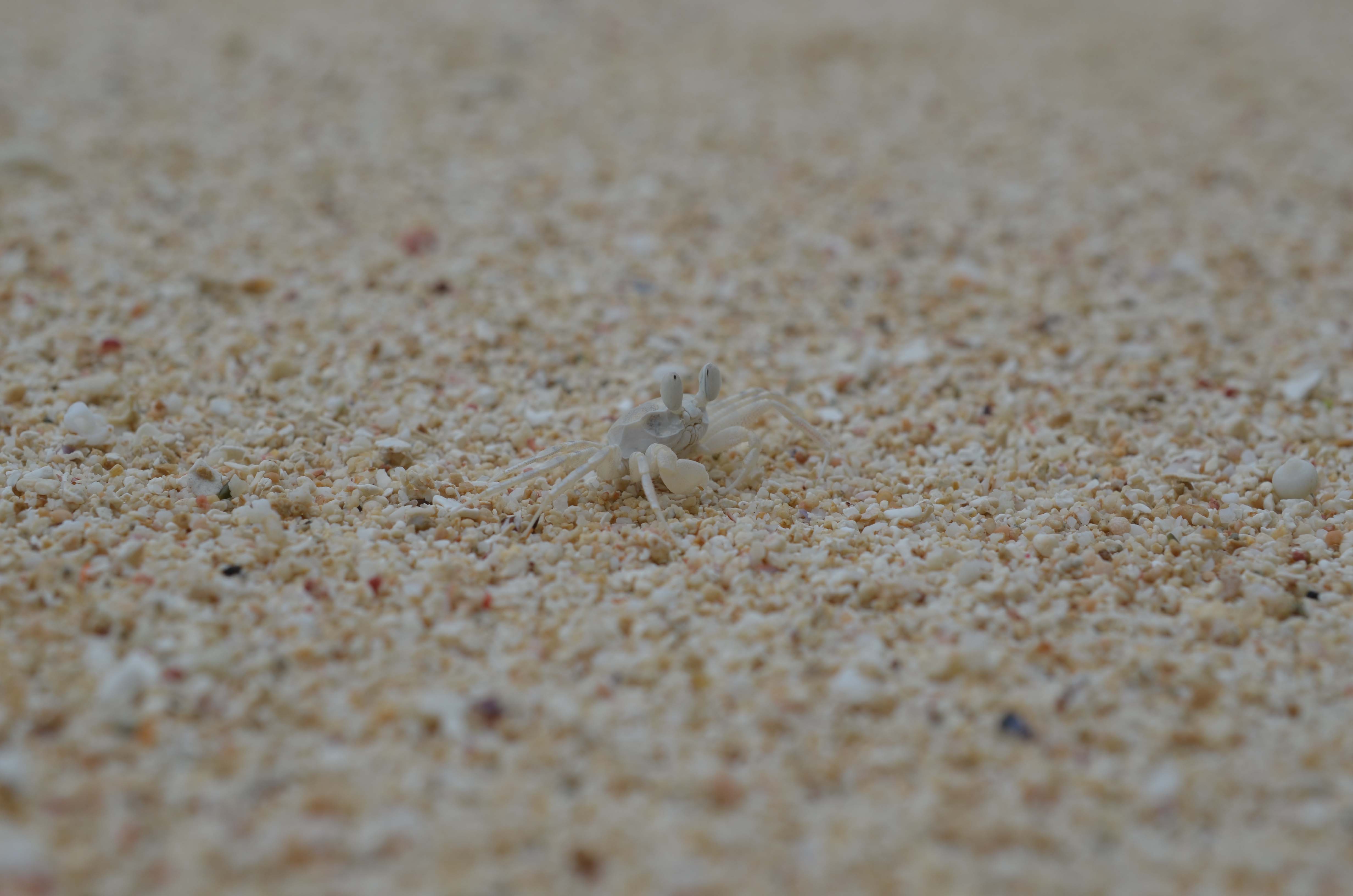
| |
| Home |
| Research |
| Teaching |
| People |
| Publications |
| Mentoring |
| Outreach |
| ROC Galapagos |
| Contact |
RESEARCH |
| The ecology and evolution of crypsis in pallid ghost crabs |
Avoiding predators is one of the most important challenges that animals must solve. As such, many animals evolve unique color patterns that reduce the likelihood of detection by predators. Classic examples of these include mice pelage that match their substrate and many insects that mimic leaves or sticks. Throughout the thousands of islands in the Pacific, the pallid ghost crab Ocypode pallidula displays striking variation in carapace color that matches their substrate. In Makira Island, some populations are found on beaches with little variation in sand color, resulting in a population of crab with little color variation. Some beaches, on the other hand, show striking variation in sand color, resulting in individuals with matching variation in carapace color. Our work aims to understand the ecology and evolution of crypsis by determining 1) if crabs can facultative change their carapace color to match their background, 2) if crabs facultative choose substrate that match their carapace color and 3) if predation indeed drives the evoltuin of cryptic coloration and behavior. This work stemmed from our Solomon Islands field course, with students collecting field data for the project. This project is a collaboration with Dr. Al Uy. |

|
Here are a few press releases on our work:
|
| BACK TO RESEARCH PAGE |